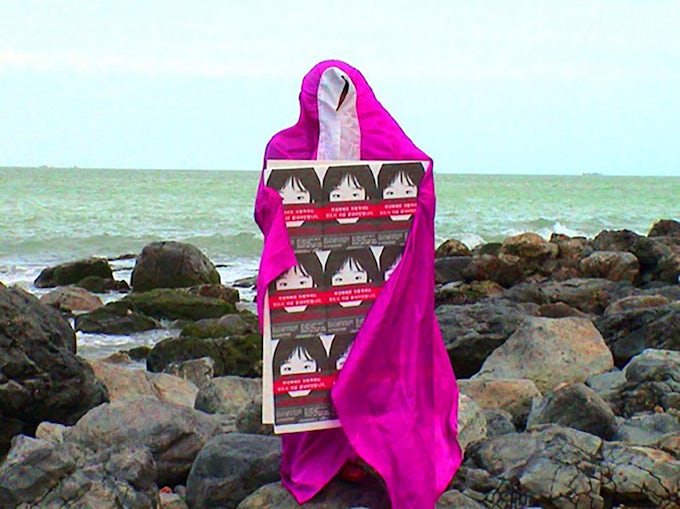Ip Gim is an unmatched artist collective that has pioneered feminist activist art practice in the 2000s in South Korea. Its official title, ‘Feminist Artist Group Ip Gim’, denotes a gentle care for the world through the ‘gentle respiration’ or ‘warm breathing’ of women. 1 Founded in 1997, they have been engaging with issues referencing the status of women in the early 2000s in South Korea through various projects, their final one ending in 2018. In this article, I shed light on Ip Gim’s key interventions in the field of contemporary art and feminist art by inscribing it within the larger context of Korean society since the 1980s.
The 1980s were marked by the emergence of social movements that combined minju (democracy), minjok (nation) and minjung (people) altogether against the military regime of Chun Doo-hwan known for its brutal repression of the Gwangju Uprising – a popular and student movement for democracy – and which was in power from 1980 to 1988. The student and labour organisations were intensely stimulated by intellectuals, college students and workers through progressive groups, as well as through the feminist and women’s rights movement, the latter of which started to unfold as a new stem within the spectrum of social struggles.
The Korean art scene found itself in the whirling vortex of the 1980s where the stiffened polarity of Minjung Misul (‘People’s Art’, henceforth Minjung Art) driven by a desire for social changes clashed against Dansaekhwa (known as ‘Korean monochrome’), representative of a modernist tendency advocating art for art’s sake. Although each articulated differences about art’s role, adopting contradictory positions regarding styles, realism versus abstraction, their shared male-oriented subjectivity was also androcentric adhering to a supposedly natural structure in art.




